Combined Multi-Omics Analysis Reveals the Potential Role of ACADS in Yak Intramuscular Fat Deposition
- PMID: 39201818
- PMCID: PMC11354380
- DOI: 10.3390/ijms25169131
Combined Multi-Omics Analysis Reveals the Potential Role of ACADS in Yak Intramuscular Fat Deposition
Abstract
The Yak (Bos grunniens) is a special breed of livestock predominantly distributed in the Qinghai-Tibet Plateau of China. Intramuscular fat (IMF) content in beef cattle is a vital indicator of meat quality. In this study, RNA-Seq and Protein-Seq were respectively employed to sequence the transcriptome and proteome of the longissimus dorsi (LD) tissue from 4-year-old yaks with significant differences in IMF content under the same fattening conditions. Five overlapping genes (MYL3, ACADS, L2HGDH, IGFN1, and ENSBGRG00000000-926) were screened using combined analysis. Functional verification tests demonstrated that the key gene ACADS inhibited yak intramuscular preadipocyte (YIMA) differentiation and proliferation, promoted mitochondrial biogenesis gene expression, and increased the mitochondrial membrane potential (MMP). Furthermore, co-transfection experiments further demonstrated that interfering with ACADS reversed the effect of PPARα agonists in promoting lipid differentiation. In conclusion, ACADS potentially inhibits lipid deposition in YIAMs by regulating the PPARα signalling pathway. These findings offer insights into the molecular mechanisms underlying yak meat quality.
Keywords: ACADS; IMF; PPARα; proteome; transcriptome; yak.
Conflict of interest statement
The authors declare no conflicts of interest.
Figures
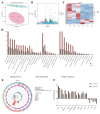


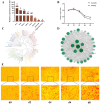
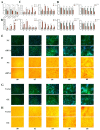

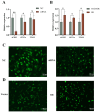
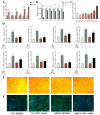
Similar articles
-
Integrated Multi-Omics of the Longissimus Dorsal Muscle Transcriptomics and Metabolomics Reveals Intramuscular Fat Accumulation Mechanism with Diet Energy Differences in Yaks.Biomolecules. 2025 Jul 16;15(7):1025. doi: 10.3390/biom15071025. Biomolecules. 2025. PMID: 40723897 Free PMC article.
-
The whole-transcriptome landscape of muscle and adipose tissues reveals the ceRNA regulation network related to intramuscular fat deposition in yak.BMC Genomics. 2020 May 7;21(1):347. doi: 10.1186/s12864-020-6757-z. BMC Genomics. 2020. PMID: 32381004 Free PMC article.
-
Longissimus dorsi muscle label-free quantitative proteomic reveals biological mechanisms associated with intramuscular fat deposition.J Proteomics. 2018 May 15;179:30-41. doi: 10.1016/j.jprot.2018.02.028. Epub 2018 Mar 3. J Proteomics. 2018. PMID: 29510239
-
TRIENNIAL GROWTH AND DEVELOPMENT SYMPOSIUM: Molecular mechanisms related to bovine intramuscular fat deposition in the longissimus muscle.J Anim Sci. 2017 May;95(5):2284-2303. doi: 10.2527/jas.2016.1160. J Anim Sci. 2017. PMID: 28727015 Review.
-
Transcription factors regulate adipocyte differentiation in beef cattle.Anim Genet. 2020 Jun;51(3):351-357. doi: 10.1111/age.12931. Epub 2020 Apr 6. Anim Genet. 2020. PMID: 32253788 Review.
Cited by
-
Genetic Diversity Estimation and Genome-Wide Selective Sweep Analysis of the Bazhou Yak.Animals (Basel). 2025 Mar 15;15(6):849. doi: 10.3390/ani15060849. Animals (Basel). 2025. PMID: 40150378 Free PMC article.
-
Effects of Rumen-Protected Methionine on Meat Quality, Fatty Acid Composition, Volatile Flavor Compounds and Transcriptomics of Longissimus lumborum of Yak (Bos grunniens).Foods. 2025 Jun 15;14(12):2102. doi: 10.3390/foods14122102. Foods. 2025. PMID: 40565711 Free PMC article.
-
Bta-novel-miR-25336 enhanced adipose differentiation and unsaturated fatty acid synthesis by targeting ACADS in intramuscular adipocytes of river buffalo.BMC Genomics. 2025 Aug 4;26(1):723. doi: 10.1186/s12864-025-11883-5. BMC Genomics. 2025. PMID: 40760419 Free PMC article.
References
-
- Wang S., Shi J.H., Wang Z.S., Hu R., Wang J.M., Xue B., Peng Q.H. Solation and Identification of preadipocytes from different parts of yak and expression of key genes for differentiation. J. Anim. Sci. Vet. Med. 2022;53:755–765.
-
- Mu Y.P., Li S., Li X.M. Report on Feeding Effect of Jiajiawang Lactic Acid Complex Acidifier. J. Anim. Sci. Vet. Med. 2011;30:7–8.
-
- Hu J.L., Zhuang L., Wu S. Research Progress on Candidate Genes Influencing Meat Quality Traits in Yaks. Chin. J. Anim. Sci. 2021;57:10–15.
-
- Wang Y.L. Master’s Thesis. Yanbian University; Yanbian, China: 2009. Effects of Dietary Energy Level and Source on the Expression of Genes Related to Fat Metabolism in Skeletal Muscle of Finishing Pigs.
-
- Mota de Sá P., Richard A.J., Hang H., Stephens J.M. Transcriptional Regulation of Adipogenesis. Compr. Physiol. 2017;7:635–674. - PubMed
MeSH terms
Substances
Grants and funding
LinkOut - more resources
Full Text Sources
Research Materials

